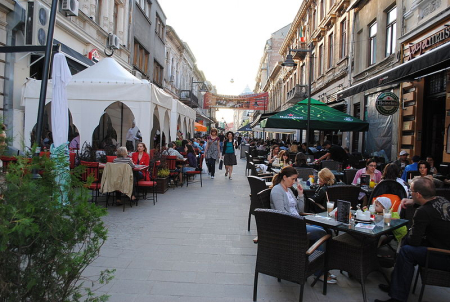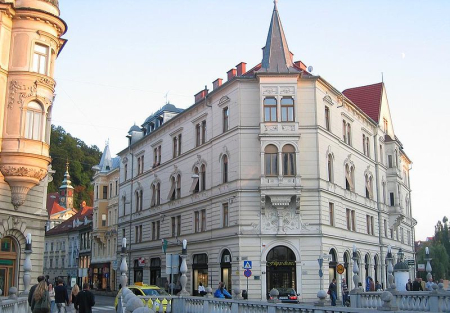
Businesses and governments the world over are reaping the rewards of the cyber world, from social networking to cloud computing.
The problem is that many of them have not yet got a handle on the risks - particularly at the most senior level.
Here we take a look at cybercrime threat in 21 countries, including India, based on PricewaterhouseCoopers study.
Click NEXT to see the threat in India...

India
Respondents who reported fraud (2011): 24 per cent
Respondents who reported fraud (2009): 18 per cent
Since the rise of the Internet, people have perceived cybercrime, traditionally, as an external threat.
Forty-six per cent of global respondents have a similar perception.
Click NEXT to see 10 countries that reported high levels of fraud...

Kenya
Respondents who reported fraud (2011): 66 per cent
Respondents who reported fraud (2009): 57 per cent
But the survey results suggest that the perception of cybercrime is changing, and that organisations are now recognising the risk of cybercrime coming from inside.
...

South Africa
Respondents who reported fraud (2011): 60 per cent
Respondents who reported fraud (2009): 62 per cent
Fifty-three per cent of the respondents who said the cybercrime threat was an internal one believe that there is a risk from the information technology department.
...

The United Kingdom
Respondents who reported fraud (2011): 51 per cent
Respondents who reported fraud (2009): 43 per cent
It's not surprising that many respondents think this, because they expect IT personnel to have the necessary skills and opportunity to commit these crimes.
...

New Zealand
Respondents who reported fraud (2011): 50 per cent
Respondents who reported fraud (2009): 42 per cent
In particular, IT personnel might have 'super user' access, which gives them extra administrative rights to access systems and the ability to delete audit trails, making it harder to detect their wrongdoing.
...

Spain
Respondents who reported fraud (2011): 47 per cent
Respondents who reported fraud (2009): 35 per cent
But it is interesting to see that respondents realise other departments, like operations (39 per cent), sales and marketing (34 per cent) and finance (32 per cent), also pose risks.
...

Australia
Respondents who reported fraud (2011): 47 per cent
Respondents who reported fraud (2009): 40 per cent
Respondents believe the risk of cybercrime is least likely to come from the human resources (14 per cent) and legal (eight per cent) departments.
...

Argentina
Respondents who reported fraud (2011): 46 per cent
Respondents who reported fraud (2009): 39 per cent
But organisations shouldn't ignore these departments, as cybercrime can happen anywhere - for example, a malicious employee with access to confidential HR data or legal documents.
...

France
Respondents who reported fraud (2011): 46 per cent
Respondents who reported fraud (2009): 29 per cent
As well as direct financial costs, there are other commercial consequences, such as reputational/brand damage, poor employee morale or service disruption.
...

The United States
Respondents who reported fraud (2011): 45 per cent
Respondents who reported fraud (2009): 35 per cent
PwCsked organisations if they thought the risk of external cybercrime mainly came from inside their own country or from abroad.
The countries most mentioned by those respondents who said the threat came from outside their country were Hong Kong (and China), India, Nigeria, Russia and the US.
...

Malaysia
Respondents who reported fraud (2011): 44 per cent
Respondents who reported fraud (2009): 28 per cent
These countries were perceived to be the most likely origins for perpetrating cybercrime.
This is only a perception, as cyber attacks can be initiated from anywhere in the world and attribution is extremely difficult.
Click NEXT to see 10 countries that reported low levels of fraud...

Romania
Respondents who reported fraud (2011): 24 per cent
Respondents who reported fraud (2009): 16 per cent
For example, there is no evidence to suggest that Nigeria is a hi-tech crime hub, but people might consider emailbased scams, like those asking for payments in advance (so-called '419' frauds), as a form of cybercrime.
...

Sweden
Respondents who reported fraud (2011): 22 per cent
Respondents who reported fraud (2009): 19 per cent
The high ranking of the US and India suggests people think countries with IT-savvy populations and where online shopping has taken off are higher risk.
...

Slovakia
Respondents who reported fraud (2011): 21 per cent
Respondents who reported fraud (2009): 29 per cent
The reality is that cybercrime is a real global threat that can come from anywhere, and is not restricted by jurisdictional boundaries like many other conventional crimes.
...

Turkey
Respondents who reported fraud (2011): 20 per cent
Respondents who reported fraud (2009): 15 per cent
Just as black markets exist for consumer goods, criminal exchange websites, like Dark Market, are emerging, where stolen credit card details are sold for as little as a few cents.
...

Switzerland
Respondents who reported fraud (2011): 18 per cent
Respondents who reported fraud (2009): 17 per cent
There is also the new form of political activism, 'hacktivism', with the Anonymous group as the leading perpetrators.
They recently hacked into major credit card companies because those companies withdrew support from WikiLeaks, and threatened to expose members of a Mexican drug cartel for kidnapping one of the Anonymous hackers.
...

The Netherlands
Respondents who reported fraud (2011): 17 per cent
Respondents who reported fraud (2009): 15 per cent
PwC asked organisations what aspects of cybercrime they were most concerned about. Forty per cent of respondents mentioned reputational damage.
Other high-ranking risks were the theft or loss of personal data, IP theft and service disruption.
...

Italy
Respondents who reported fraud (2011): 17 per cent
Respondents who reported fraud (2009): 19 per cent
Because organisations are very concerned, particularly about reputational damage, it is important for them to show they are the most secure business in the market if they want to gain competitive advantage.
...

Greece
Respondents who reported fraud (2011): 17 per cent
Respondents who reported fraud (2009): 23 per cent
Sixty per cent of respondents said their organisation doesn't monitor the use of social media sites, or they are not aware of any monitoring policies.
...

Slovenia
Respondents who reported fraud (2011): 17 per cent
Respondents who reported fraud (2009): N/A per cent
This is startling, given these sites can present significant security risks if employees and hackers abuse them.
...

Indonesia
Respondents who reported fraud (2011): 16 per cent
Respondents who reported fraud (2009): 18 per cent
Social media sites like Facebook, Twitter and LinkedIn might not be the real source of cybercrime, but criminals can use them to socialengineer cybercrime more effectively.